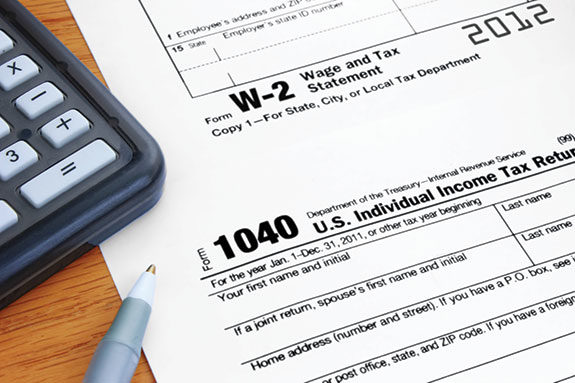With the uncertainty of market conditions that many dairy farmers are facing today, saving a dollar here and a dollar there is more crucial to the survival of the dairy operation than ever. Class III milk prices appear to be promising for the next twelve months and will probably range from $18 to $21 per hundredweight (cwt) – and hoping to be on the rise – but feed prices are still at an all-time high. Many dairy farmers have looked at their operation with a fine-tooth comb and made the tough decisions on where to cut expenses.
But let’s not forget the potential tax burden these operations could be faced with in 2012 and beyond. Many dairy businesses are structured as limited liability companies, partnerships or sole proprietorships. Income or losses of the dairy operation from these types of entities flow through the owners’ income tax returns. In addition, most dairies are taxed on a cash basis.
There are two different types of income that flow through to the owners – financial statement income and taxable income. These two types of income are often substantially different. Simply looking at your current financial statements to determine your taxable income could cost you money in the future.
Business owners have attempted to calculate their taxable income themselves to save on accounting fees. There are too many things that can go wrong without the assistance of your financial adviser. Individuals forget the deferred income they have been pushing off to future years.
They forget to calculate alternative minimum tax, which is a confusing calculation even to the experienced accountant. For farmers that receive farm subsidies and have income from other non-farm sources, their farm losses can be limited to how much can be offset against non-farm income.
Lastly, individuals often forget about self-employment taxes. The advantages of tax planning far outweigh the costs of spending several hours with your tax accountant.
If you were one of the unfortunate farmers who were forced to sell out, whether voluntarily or involuntarily, there are tax consequences you must talk to your financial advisers about, such as gains on sale of properties and any potential debt forgiveness from your creditors. This could mean tens of thousands of dollars you will have to pay to Uncle Sam – but it may be avoidable with proper planning.
With the ever-changing rules of the IRS , all businesses and individuals should take a proactive approach in minimizing their tax liability. There are new tax rules that took effect in 2012 that you might not be aware of. One major rule change that will affect all business is depreciation.
In 2011, Section 179 depreciation deduction was $500,000, while in 2012 this same deduction was lowered to $139,000. In addition, in 2011, businesses were able to deduct 100 percent of the cost of qualified new capital purchases but, in 2012, this is reduced to 50 percent. In 2013, this bonus depreciation disappears and capital purchases are depreciated over the useful life of that asset.
The individual income tax rates will also change. For 2012, the tax rates are currently ranging from 10 to 35 percent. However, for 2013, the tax rates will automatically revert back to pre-2003 rates ranging from 15 to 39.6 percent, unless our friends in Washington change their minds.
This might not seem much, but this could translate to thousands of dollars. Should individuals pay their taxes now and take advantage of the lower tax brackets or defer income, which is a better strategy? This can be answered with the appropriate tax plan in place.
Another major tax change is in estate taxes, also known as death taxes. If you have already established an estate plan, congratulations – you are ahead of the game. But when was the last time you updated it? And if you haven’t established one yet, now is the time to set one up.
The current federal lifetime exemption for estate tax is $5,000,000 per individual ($10,000,000 for married couples) and a 35 percent maximum tax bracket. This current law is set to expire at year-end.
Unless Congress acts on a revised estate tax, the exemption will revert back to pre-2001 levels at $1,000,000 per individual and a 55 percent maximum tax bracket beginning January 1, 2013.
Most professionals are constantly guessing on what the future will hold on estate taxes – and nothing will be clear until after the presidential election in November, we hope. Both presidential candidates had completely opposite views in dealing with estate taxes.
Governor Romney had proposed to repeal the death tax. President Obama has proposed to revert back to the 2009 estate tax levels whereby estates worth more than $3,500,000 would be subject to the tax and would face a top rate of 45 percent.
Whichever one wins the election, they must present their proposals to the Democrat-controlled Senate and the Republican-controlled House of Representatives for approval. If history repeats itself, this could be a drawn-out ordeal.
What all professionals do agree on is that regardless of what happens in the upcoming election, everyone should have an estate plan which must be revised constantly to take into account new rules and regulations. Contact your certified public accountant soon to establish a tax plan. PD
Lizardo is a certified public accountant and partner with Frazer, LLP.







